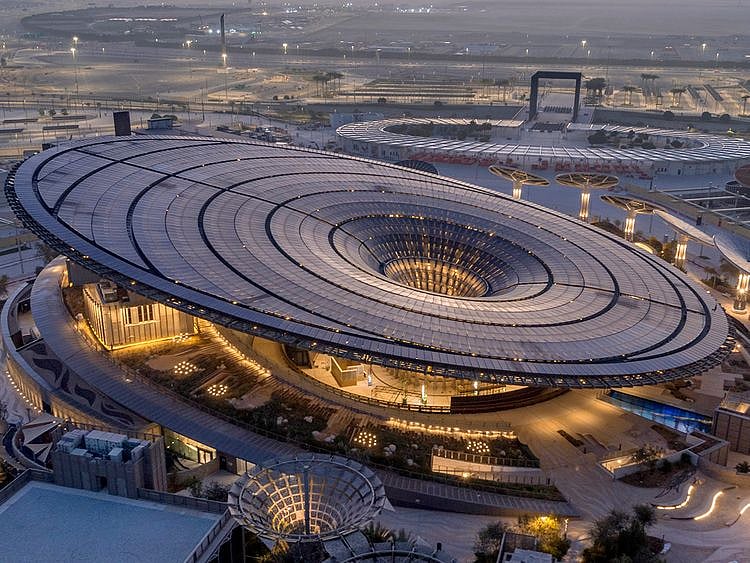Beyond the museum walls: Preservation as a shared global responsibility
As museum leaders meet, UAE redefines preservation as living, shared commitment to future

Every act of preservation is an act of intention. What we choose to protect, to restore, and to carry forward determines not only how we understand the past, but also how we build our shared future.
This November, the International Council of Museums (ICOM) General Conference comes to Dubai. It will be the first time this flagship event is hosted in the Middle East, Africa, or South Asia since its founding in 1946. This milestone arrives at a time when the world faces the accelerating impacts of climate change, technological disruption, and contested narratives. The conversation around preservation has never been more urgent, or more global.
Museums and cultural institutions have long carried the responsibility of safeguarding truth, authenticity, and memory. Today, however, preservation is no longer confined to static collections behind glass. It extends into living systems, digital landscapes, intangible knowledge, and the fragile relationships between people and the natural world.
Preservation is not a passive act
In Dubai, there is growing recognition that preservation is not a passive act. It is active, inclusive, and evolving. It requires us to engage with communities, to amplify diverse knowledge systems, and to embed sustainability and regeneration at the core of how we imagine and manage cultural institutions. To preserve is also to invite learning, participation, and care.
This work demands clarity. It calls on us to elevate both indigenous and scientific knowledge, to reimagine what sustainability looks like in cities, and to support communities in becoming active stewards of place and planet. It could look like reconnecting people with nature through activations, education programmes or on a strategic level rewilding and championing native biodiversity. It is about ensuring that the narratives we protect are not only accurate but also alive.
In an era where information can be distorted, ecosystems degraded, and cultural memory contested, preservation becomes an act of leadership. It requires us to ask difficult but essential questions. What truths will we defend? What futures will we nurture? How can we ensure that what we preserve reflects the full richness of human and ecological history?
That is why we must listen closely. Preservation should reflect the diversity of lived experiences across cultures and generations, drawing on the insights of youth, creatives, scientists, and communities who bring fresh perspectives to how we understand place and identity. In a world shaped by change and complexity, it is vital that preservation evolves to include the many ways people experience and remember their environments.
Endless possibilities
In the UAE the possibilities are endless. As a crossroads of culture and commerce, we can set the stage for co-created futures, where preservation becomes a practice of listening as much as archiving. The youth of this region, especially, must be invited not just to witness history, but to shape how it is told.
True preservation makes cities more liveable. It invites people to settle meaningfully, not just move efficiently. When we design with memory, green spaces, and cultural layers in mind, we create cities that offer both belonging and resilience.
Across Dubai, we are already seeing this shift in action. From the restoration and reimagining of the Al Shindagha Museum to interactive experiences that bring ecological stories to life at Terra, preservation is being activated through public engagement, sensory learning and strategic storytelling. These are not isolated efforts. They reflect a growing movement to connect people emotionally and intellectually with their cultural and environmental legacies.
By hosting ICOM, the nation is helping rewrite the blueprint of what cultural leadership can look like. Too often, culture is seen as decorative. But culture is infrastructure. It is what makes communities cohesive, resilient, and able to imagine futures together.
Not the preserve of the privileged
And crucially, culture must not remain the preserve of the privileged. Museums, heritage sites, and cultural experiences must be reimagined as places for all, inter-generational, inter-communal, and inclusive in every sense.
At the same time, newer experiences like Terra and Vision fill a critical gap in the cultural landscape by showing that culture is not confined to history. Expo City Dubai is a living lab for innovation and cultural exchange, it invites visitors to engage with preservation as a participatory act through learning journeys, exhibitions, and experiences that connect nature, heritage and progress. The lessons being tested here, of co-creation, of climate action, of inclusion – can inspire a global shift in how we approach preservation in practice.
Cultural preservation is how nations express what they value, and what they wish the world to see. In that sense, memory becomes strategic. What we choose to exhibit, restore, or document becomes a blueprint for how we want to be remembered. For a young and ambitious nation like the UAE, that blueprint is still being drawn, and it must reflect both heritage and hope.
As museum professionals and cultural leaders gather in Dubai for ICOM 2025, this moment offers an opportunity to redefine preservation. It is not a passive responsibility. It is a courageous and forward-facing commitment to humanity and the world we share.
Marjan Faraidooni is Chief of Education & Culture, Expo City Dubai
Sign up for the Daily Briefing
Get the latest news and updates straight to your inbox
Network Links
GN StoreDownload our app
© Al Nisr Publishing LLC 2025. All rights reserved.